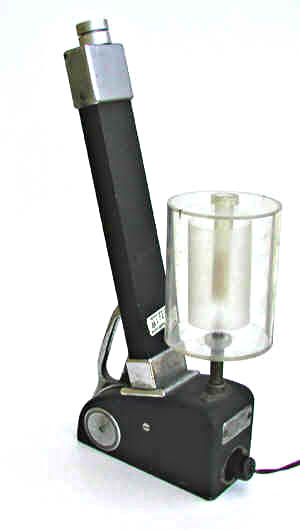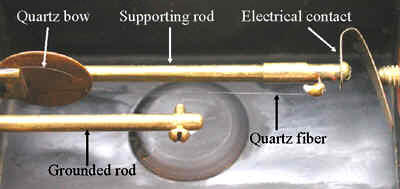String Electrometer of Carl Braestrup (1930s, early 1940s)

This electrometer (ca. “high) was produced for Carl Braestrup, probably in the 1930s. A picture of it appears in his paper "X-ray Protection in Diagnostic Radiology" (Radiology, February 1942, p. 207-216) the caption of which identifies it as a "condenser r-meter." It was used to measure the charge on condenser-type ion chambers before and after a radiation exposure. The decrease in the charge was related to the exposure via a calibration. In the photo to the right, the unit is connected to a plastic well-type chamber.
Carl B. Braestrup (1897-1982) was born in Copenhagen Denmark. He worked as an engineer at Bell Telephone Laboratories and Picker X-ray Corporation, he instructed at the Post Graduate Medical School of Columbia University, and served as the Director of the Physics Laboratory of the New York City Department of Hospitals. He was one of the first in the 1930’s to develop a film badge that would account for the energy of the radiation and was one of the first ten persons certified in X-ray physics by the Radiological Society of North America. An internationally recognized expert on shielding design, he developed a standardized approach to the shielding design for medical and industrial X-ray facilities that formed the basis of the NCRP 49 methodology. Together with Harold Wyckoff, he coauthored the classic textbook Radiation Protection (1958).
Donated by Richard Mooney.

This photo shows the internal components of the electrometer. The fiber is attached at one end to a fixed post and at the other to a quartz bow. When used to perform a measurement, the fiber and post are electrically connected to the chamber while the rod running parallel to the fiber is grounded.
